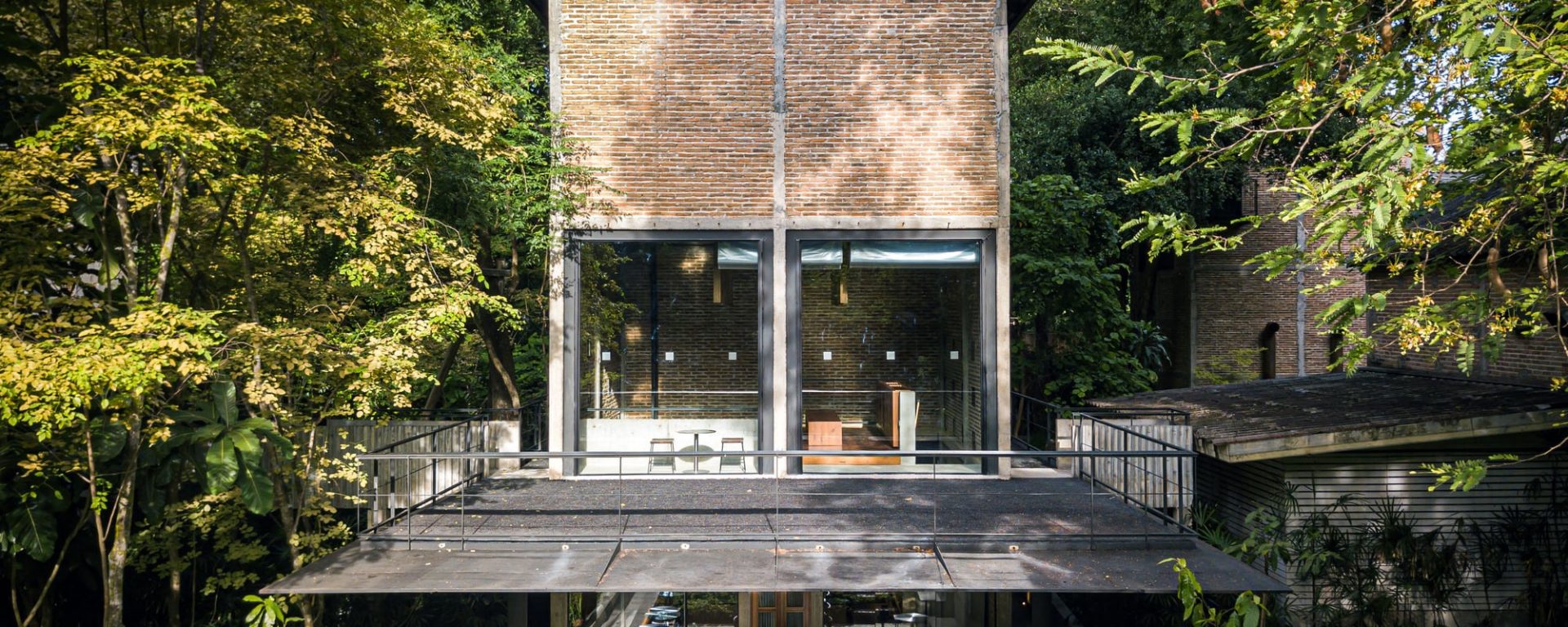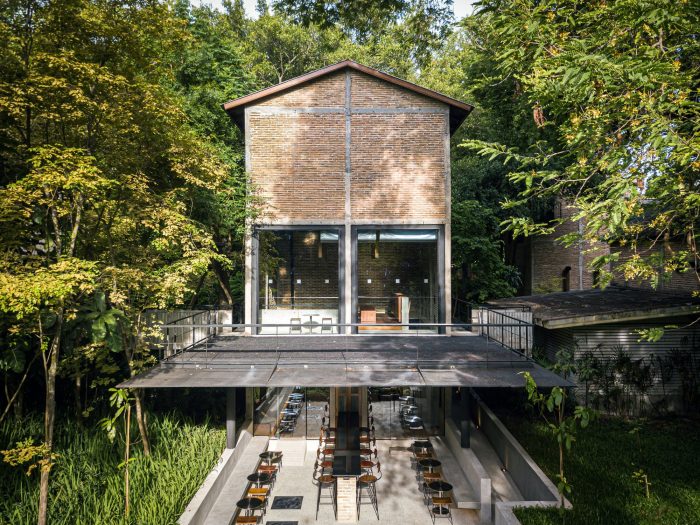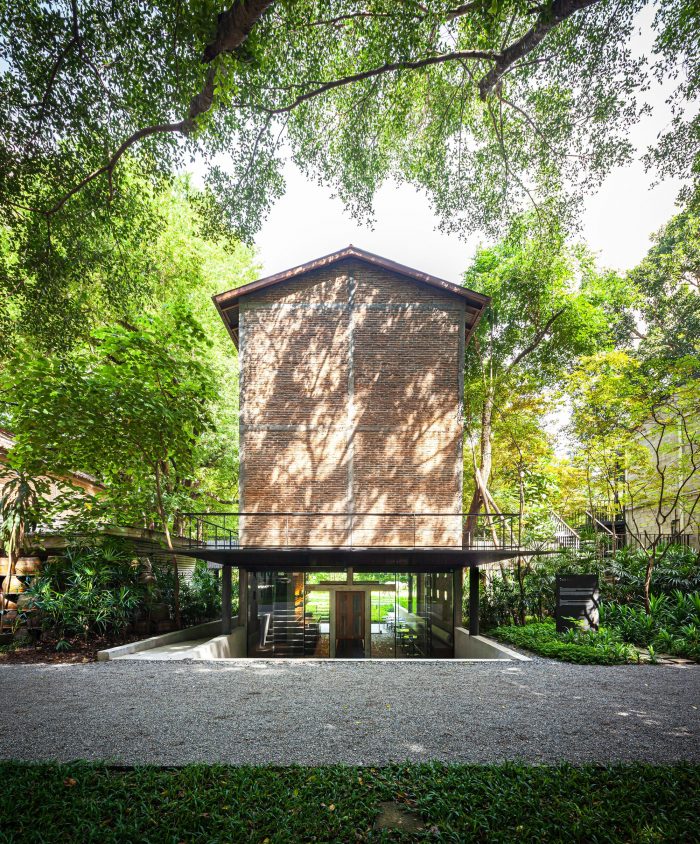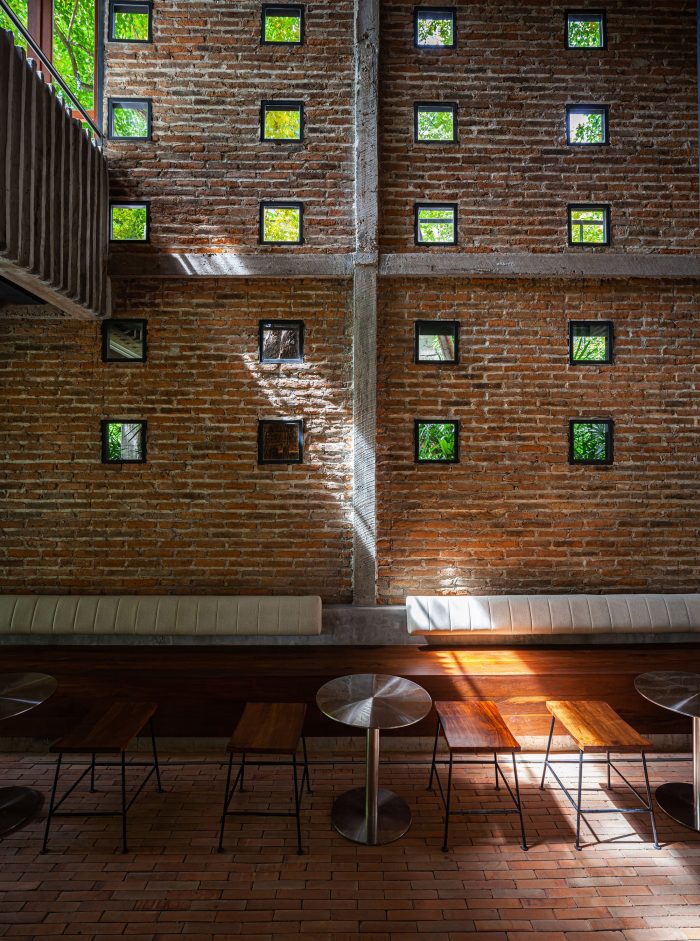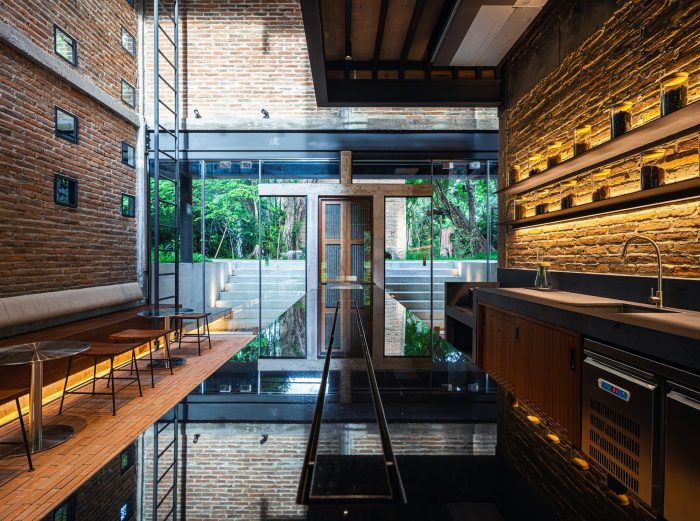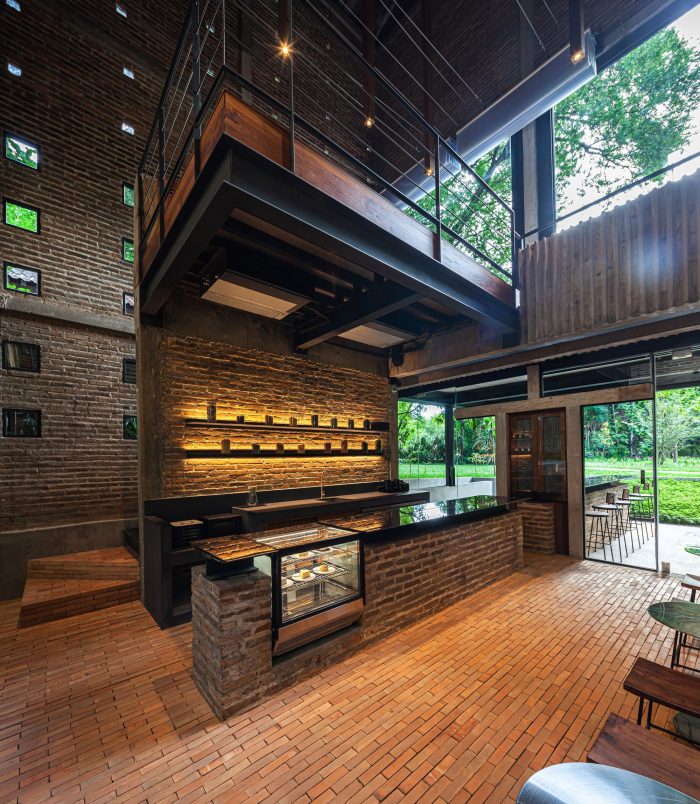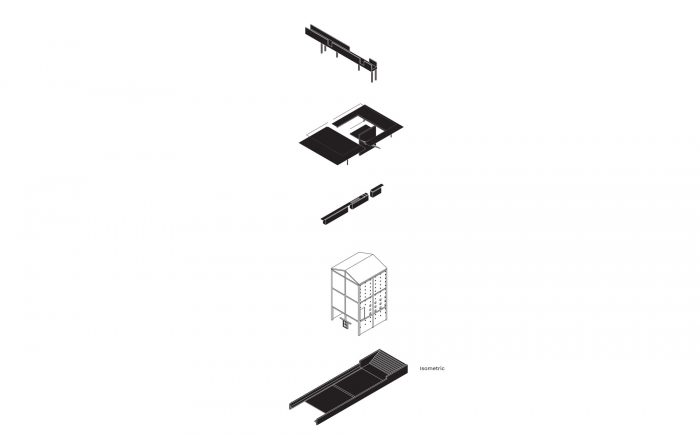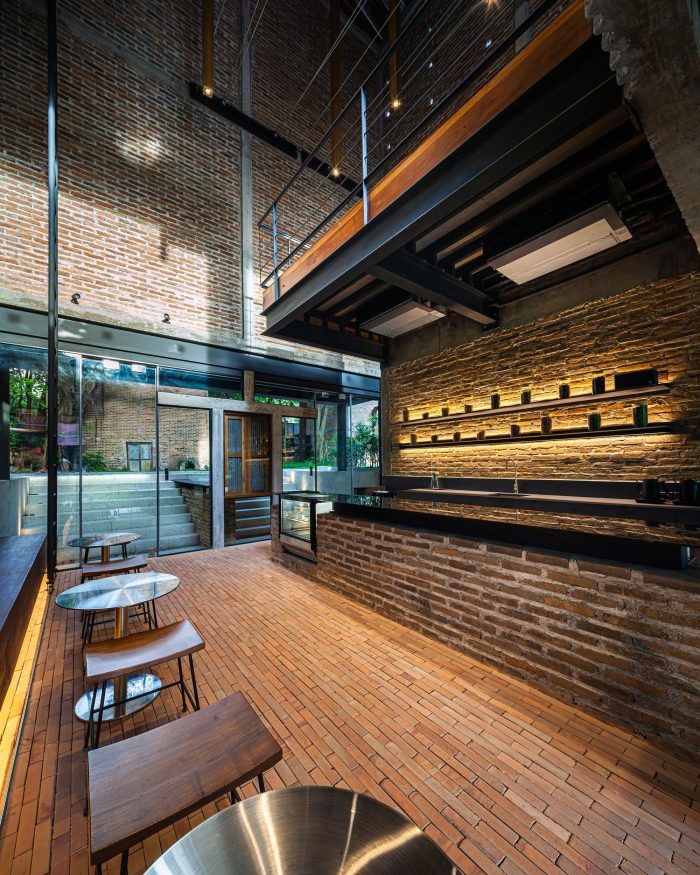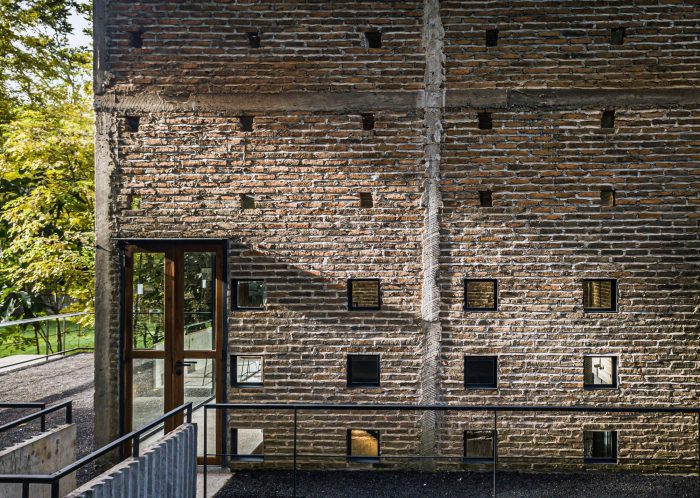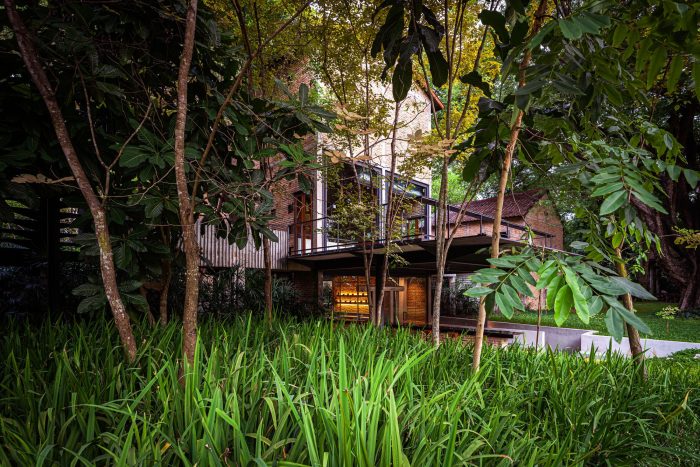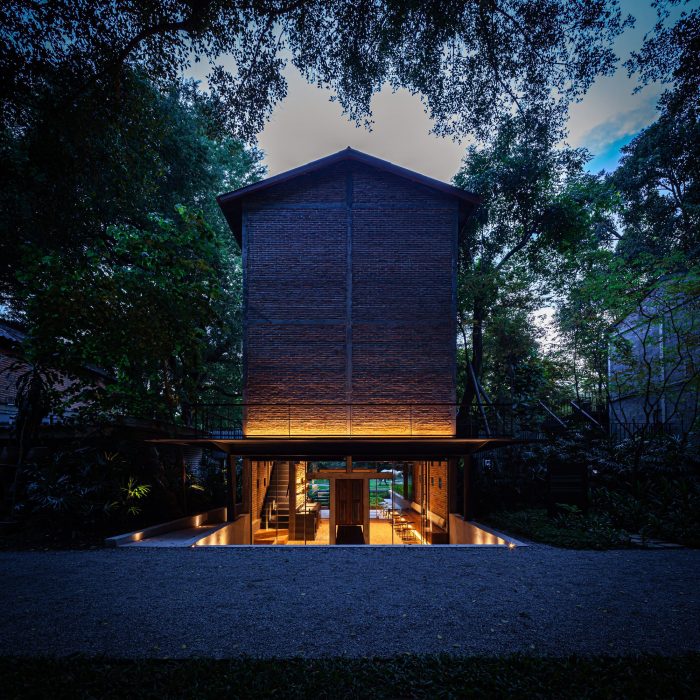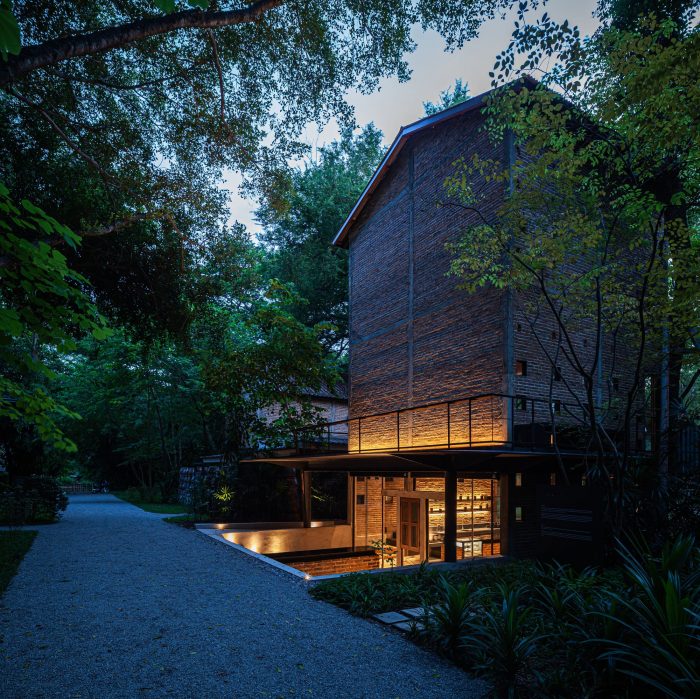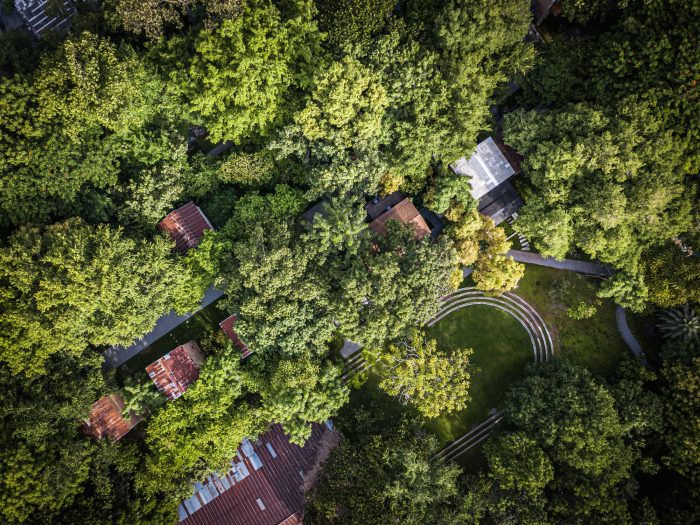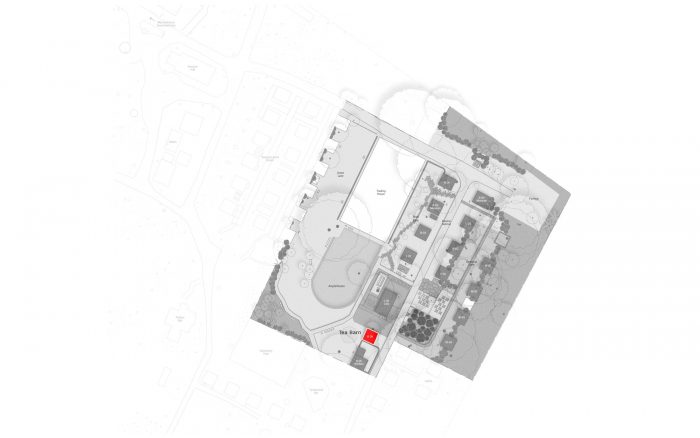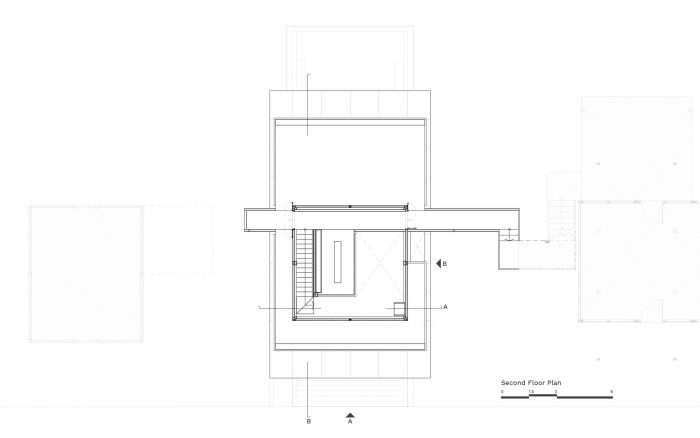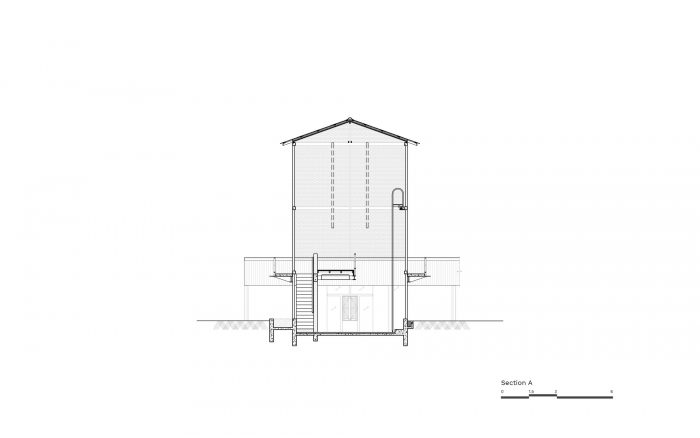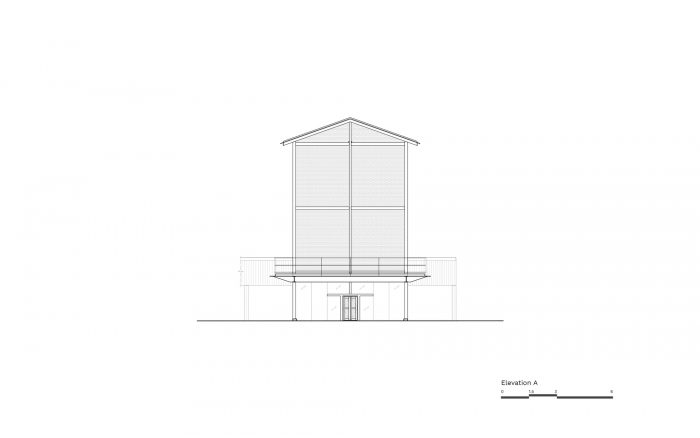Kaomai Tea Barn是Kaomai Estate 1955内的一个持续的适应性再利用项目,该项目是清迈一个多年的烟草加工厂庄园的活化项目。2018年,Kaomai Estate 1955被授予2018年联合国教科文组织亚太文化遗产保护奖的遗产背景类别的新设计奖。作为联合庄园内新商业项目的增量计划的一部分,项目位置得到了谨慎的尊重,但又将周围的生态、景观和现有建筑联系在一起。因此,设计设想将熏衣草茶仓作为一个连接平台,将熏衣草大道、露天剧场和熏衣草咖啡馆在水平和垂直方向上联系起来。
Kaomai Tea Barn is a continuously adaptive-reuse project within Kaomai Estate 1955, the revitalized project of a multi-decade tobacco processing plant estate in Chiang Mai. In 2018, Kaomai Estate 1955 was awarded the 2018 UNESCO Asia-Pacific Awards for Cultural Heritage Conservation in New Design in the Heritage Contexts category. As part of the incremental plan to unite new commercial programs in the estate, the project location is carefully respected, yet links the surrounding ecology, landscape, and existing buildings together. As a result, the design envisions Kaomai Tea Barn as a connection platform to link Kaomai Avenue, the Amphitheater, and Kaomai Cafe both horizontally and vertically.
遵循保护的惯例,设计尊重遗产谷仓在建筑尺寸、形式和材料方面的特殊性和真实性,包括重复的6×6米的规划类型。提议将新茶馆空间下沉的设计手法,突出了真实的体量,并在地面和建筑方案的多层之间建立了卑微的联系。同时,这些多层创造了一种独特的饮茶文化体验。
Following the conservation practice, the design respects the heritage barns’ specificity and authenticity in terms of architectural dimensions, form, and materials, including the repetitive 6 x 6-meter planning typology. Proposing to sunken the new tea house space is the design technique that highlights the authentic volume and creates a humble connection between ground level and the multi-floors of the architectural program. Meanwhile, these multi-levels create a unique experience of tea drinking culture.
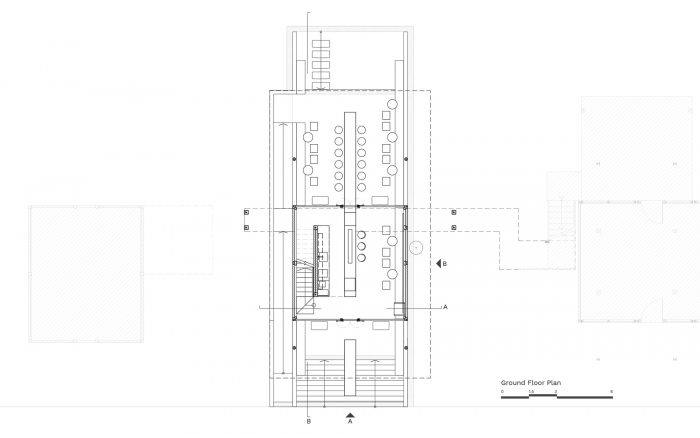
茶仓被设计成在黑暗环境中发光。照明设施的设计是隐蔽的,并强调了烟草干燥仓的价值和真实性。为了突出真实的砖块表面和独特的垂直内部空间,线性照明和平滑发光的筒灯与当地制作的混凝土、木材和深灰色结构巧妙地结合在一起。由于提议的照明设计,烟草烘干仓的坚固性和新的开放空间的对比,沿着历史路线、现有建筑和自然遗产引入了简陋的设计体验。
The tea barn is designed to glow in the dark environment. The lighting features are designed to be hidden and to emphasize the tobacco-drying barn’s values and authenticity. To highlight the authentic brick surfaces and unique vertical interior space, linear lighting and smooth glowing downlight are subtly integrated with the locally crafted concrete, timber, and dark gray structure. Due to the proposed lighting design, the contrast of the tobacco drying barn solidness and the new opening space introduces the humble design experience along the historic routes, the existing architecture, and the natural heritage.
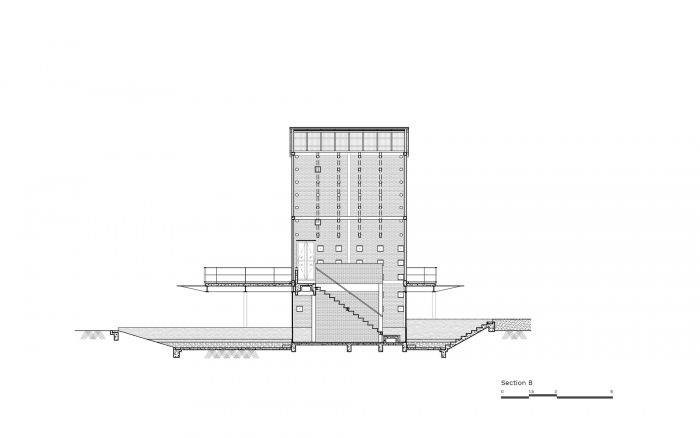
设计拥抱 “重建技术”,这是一种设计方法,由于现有的结构已经恶化,所以要重建建筑的感知。建筑团队测量和记录建筑材料的每一个细节,如砖、砂浆、空隙、柱子和梁。在尊重谷仓原貌的基础上,用现代化的钢材和钢筋混凝土重建保留下来的砖块,将通过保护性实践与现代设计美学的结合,使一个被忽视的工业类型重新获得生命。
The design embraces the “Reconstruction Technique” which is the design methodology to rebuild the building perception as it used to be since the existing structure has deteriorated. The construction team measures and records every detail of building material such as brick, mortar, void, columns, and beams. Respecting the barn’s originality, reconstructing the preserved bricks with modernized steel and reinforced concrete will resurrect an overlooked industrial typology to life again by combining a conservation practice with a contemporary design aesthetic.
在 “历史和生态旅游 “的框架下,熏衣草茶仓是整体总体规划的另一个重要部分,它可以在经济、社会和环境方面随着时间的推移而成长。该项目再次鼓励游客欣赏保留下来的晒烟仓和丰富的自然环境的美感,并在现场了解当地的历史、本土植物和生态环境。该项目使烟草加工厂在过去的作用得以恢复,成为社区的社会和经济中心,增强了今天当地的包容精神,并创造了社会的可持续性。
Under the umbrella of the “Historical and Ecological Tourism” framework, Kaomai Tea Barn is another vital part of the holistic Masterplan which could economically, socially, and environmentally grow through time. The project once again encourages visitors to appreciate the aesthetic of the preserved tobacco drying barns and rich nature and learn about the local history, native plants, and ecology on site. The project brings back the role of the tobacco processing estate in the past, serving as the community’s social and economic center, enhancing today’s spirit of local inclusion, and creating social sustainability.
Architects: PAVA architects
Area : 210 m²
Year : 2022
Photographs :Spaceshift Studio
Lead Architects : Varat Limwibul, Pacharapan Ratananakorn
Landscape Architect : Varat Limwibul
Interior Architect : Pacharapan Ratananakorn
Structural Engineer : Nil Khamaoy
Contractor : Nil Khamaoy and Kaomai Team
Client : Kaomai Estate 1955
Lighting Design Consultant : Vasapol Teravanapanth
Country : Thailand

